
Fast Mimicking Diet: What it is, why to try it (or not) & how to sign up!
A few months ago I read The Longevity Diet by Dr. Valter Longo—I highly recommend this book to anyone wanting to learn a way of eating that is well-balanced and linked to a higher degree of health and longevity. I was intrigued by his findings regarding how a low-calorie, vegan diet could mimic the benefit of fasting without muscle-wasting and other negative side effects of a prolonged fast. Over the last 20 years, he has been studying how to use food to promote healing and developed a product line to make it easy to add the Fast Mimicking Diet to a 5-day protocol for the benefits of metabolic reset and stimulating autophagy (cellular clean-up) and cellular rejuvenation.
Several things impress me about his company, L-Nutra:
More information on this can be found on the Prolon Site: https://prolonlife.com/pages/the-science
Here’s what I learned from my test of the 5-day fast!
For this test, my husband Charlie agreed to do the program with me. This was important to me because he is a picky eater and his evaluation of taste and texture would help me rate suitability for a broad range of patients. It was also important because he’s never done any fasting before. I wanted to see how he handled the calorie-restricted diet as well.
Today as I’m writing this is Day 5, I will add to this around Day 7 to capture afterthoughts and later observations but here are some initial results.
Day 5:
I have done calorie restrictions and lighter fasting before. While I did feel hungry here and there, throughout the 5 days—by snacking consistently on the items in my box throughout the day I was never starving, lightheaded or woozy! Day 4 and 5 I did experience some headaches and body aches but they were all localized around the areas of past injuries—I’m assuming this is part of the repair process. None of it was bad enough to make me think about taking something, it was more like a dull ache than pain. The texture and flavors of the items are ok—it’s freeze-dried soups, bars, and crackers. The crackers and olives were my favorite! There are a couple of chocolate-covered rice crisps throughout the 5 days to give a little sweet something.
Charlie was hungry a lot throughout the 5 days—a couple of times he had to add some extra food (a small amount of nuts or a bite or two of cottage cheese). This may have added to the sense of being hungry but he didn’t give up and got through it.
We both limited our physical activity and chose a time when we could rest if we felt like we needed it during the 5 days. I wouldn’t have done a workout but my energy was fine through the 5 days. Charlie definitely slept more but it’s unclear if that was due to napping to avoid feeling hungry or because he was that tired from the process.
The next few days post fast will be telling. I do know I appreciate that I am back to the weight I feel best at. I feel a blossoming of energy and want to work out!
As recommended, we would repeat this process 1x per month for 3 months and then go to 2-3x per year for maintenance. Time will tell if Charlie will do this with me again next month.
Now—who should not do this?
Day 7 update:
I’ve been noticing more muscle soreness after increasing my workout intensity over the last couple of years. I added in a pretty tough workout to see if the fast changed this. I can tell my metabolism is working more efficiently—I’ve actually dropped another pound even though I’m eating my normal amount and another ¼” off my waist measurement. Charlie noticed his clothes fit better—and he’s said he’s willing to do this all again next month as we follow the initial 1x per month for 3 months as recommended by Dr. Longo.
Order your kit HERE (external site)
If you are diabetic, pre-diabetic, or are under treatment by an MD for any condition please contact the office for a FREE CONSULT to determine if this program is right for you.
Summer Healing Herbs: Lily Bulb & Artemisia Tea

It’s tempting to reach for a cold glass of water or sweet tea in this hot weather, but those ice-cold drinks may not be the best way to stay fit and hydrated! In many ruggedly hot climates, the tradition is to drink hot teas that are lightly sweetened to help stay cool. How does that work?
There is some evidence that drinking a warm beverage increases evaporative heat loss potential and, therefore, reduces body heat storage in dry environments that allow for sweat evaporation. The keywords here are dry environments. Think: desert conditions—so when it’s hot and dry that hot drink will help you cool off more. In hot and humid climates the humidity prevents the sweat from evaporating so the benefit of the hot drink won’t be as great unless there is a breeze helping to increase the evaporation or sweat.
As Tolkien wrote in The Lord of the Rings, “Pay heed to the tales of old wives. It may well be that they alone keep in memory what it was once needful for the wise to know.” Oral tradition should not be dismissed out of hand, simply because it initially strikes us as absurd.
In the heavy humid heat of a Kentucky summer, I enjoy this recipe from southern China—this herbal tea made of lily bulbs and artemisia helps improve circulation, drain excess dampness, support the lungs, and boost immune function. It can be enjoyed hot or cool but preferably not iced (and a little honey or stevia is fine). Given that our weather is sometimes humid and sometimes dry, let the weather determine your drink temperature for optimal cooling.
Other teas to help beat the heat include: hibiscus, mint, chrysanthemum, and tangerine peel—either alone or served in pairings.
Plastic-Free July

This article was sent to me by my brother. It is eye-opening and has a shockingly bad prognosis for the future of our planet if we don’t start thinking about ways to reduce our reliance on plastic and look hard at the reality of the hidden costs of recycling:
Quillette Article: Recycling Plastic Is a Dangerous Waste of Time
Change doesn’t happen overnight and it doesn’t happen because the government mandates it. It happens because people change things with how they spend their money. We’ve seen this in the incorporation of stevia and other healthier sweeteners in food, a broader selection of gluten-free options, etc. It also happens because each person does what they can to promote that change. Here are some little ways we at Raja Wellness will be working to reduce plastics:
In my private life here are some things I do to reduce my plastic use:
There are many ways we can make changes for the better—while supporting local farmers and artisans, and choosing natural and organic options!
With the arrival of hot weather, it’s important to take a few steps to maintain optimal health.
Many people understand the importance of hydration but need to understand the need for electrolytes as opposed to just straight water. Unfortunately, many of the sports drinks on the market are full of sugar and processed additives. I recommend you explore some of the home remedies for a natural electrolyte drink. my go-to is natural sea salt, blackstrap molasses, lemon or lime juice, and water. I may even add a dash of apple cider vinegar. The amount of each depends on your personal taste and will change day-to-day depending on your electrolyte needs. A moderate starting point would be 2 to 3 teaspoons of blackstrap molasses, 1/2 teaspoon of natural sea salt, water, and lemon juice to taste.
If you’re lucky enough to have lotus growing on your property or know how to find the local Asian market lotus Leaf (he ye); you can add a little bit of Goji berry to your drink to give you more energy! Hibiscus or Jamaica makes a nice summer tea as well and adds an extra boost of natural vitamin C.
Recognizing the changes in your nutritional needs is also important. What worked as a good plan in the fall and winter time may not be as optimal in Summer. Summertime is when fresh salads, gazpachos, and fruit really shine. Watermelon, cantaloupe, and other melons are wonderful with a little sea salt and help restore hydration. Cucumbers and celery make nice cool platforms for things like hummus and nut paste. Blend walnuts and water and seasonings to taste such as a steak seasoning. Garlic and olive oil can add healthy fats with a new twist.

Being mindful of the heat is critical, especially if you’ve ever had heat stroke in the past. Unfortunately, once you’ve had heat stroke, you’re more susceptible to it in the future—pay attention to how much you are sweating or worse yet—if you stop sweating. Make sure to take frequent rest breaks and avoid the hottest parts of the day as much as possible when physically exerting yourself.
Sleep can be more challenging when the weather gets hot. Comforters and blankets with cooling properties and swapping out your heavy blankets for lighter throws can help ensure a good night's rest.
Contrary to our American conditioning, cold drinks are not the best thing to drink when it’s really hot! When you look at the traditional drinks in areas of the world where it is extraordinarily hot, they still drink hot teas made of mint or similar aromatic herbs to help encourage sweating and maintain a normal body temperature. In the Eastern model, we view the excessive consumption of very cold drinks, especially during summertime, to be particularly damaging to digestion and overall body function. See if you can learn to appreciate a cool drink as opposed to an ice drink. Your metabolism will thank you!
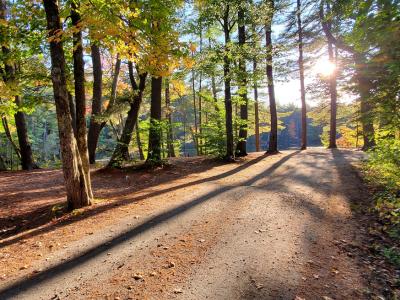
Now is also the time to stock up on vitamin D—but at our latitude, the window for actually absorbing that vitamin D is pretty narrow. The goal is to get 15 or so minutes of direct sun on your skin between the hours of 11 am and 1 pm (the sun is at the optimal angle during these times to maximize production of vitamin D). For most people, this isn’t enough time to burn so you can safely do this without sunscreen.
And of course, if you’re going to be in the sun for longer periods of time, sun, protective clothing and hats (Look for pieces with UPF-rated protection) are a great idea, as well as an all-natural reef-safe sunscreen.
Hopefully, these tips will help you make it through the summer doldrums feeling fresh and full of good health!
Disclaimer: The information provided in this blog post is for informational purposes only and is not intended as medical advice. Always consult with a qualified healthcare professional before making any changes to your health regimen or treatment.
As we take time this month to honor those dads and those who step in as dads when needed, I want to reiterate the importance of self-care for those loving fathers. Too often they get caught up in taking care of others and culturally—we don’t value self-care for men. Sure there are plenty of ads promoting physical fitness, and masculine virility but not so much on taking time to nurture their emotional and social well-being. Social isolation is one of the biggest factors indicating a shorter lifespan for men! Healthy relationships with other men promote decreased depression and anxiety and increased overall wellness. We should be more supportive of these friendships!
Men are more likely than women to suffer from unaddressed emotional traumas as well. This stigma about male mental health is damaging—not only to all of our fathers and father figures but damaging to the boys who will grow into men and fathers in the future. One of the best ways to promote self-care in the next generation is to model it in ourselves. Acupuncture can be a great way to deal with emotional as well as physical issues. And unlike many other approaches, talking about their trauma details is not necessary for effective treatment.

And self-care isn’t just sitting on the back porch with a beer and running the grill for the family. It’s taking time to connect with others who are important to you, whether it’s family members or friends—and to develop those relationships where they don’t exist. Self-care is spending some portion of each day doing something that you love without any expectation of being productive. Many years ago, one of the department heads on my first ship was an ardent maker of rugs. He would take all of his gear on deployment and every underway…and spend at least five or 10 minutes each day working on his latest creation! He caught a lot of flack for this artistic endeavor, especially since it wasn’t anything that could be sold (because to be honest they weren’t that “good” from a technical perspective and it was gasp—what some would consider “girly” art). But I learned something from his persistence and determination in seeking his own happiness and well-being. It was not about doing what was technically “right” or pleasing someone else. It was about spending some time each day doing something he loved. It was evident he was one of the happier, more productive officers on the ship. His kids also felt free to pursue whatever creative endeavors struck their fancy. We should’ve embraced these types of endeavors for the entire crew. So find something that you love to do simply for the sake of doing it!
Lastly, for reasons, I don’t fully understand—men seem to struggle more with nutrition than women. It is almost like there’s a collective denial about their mortality and the need to take better care of themselves. Certainly, this is not all men—and I do see more lately taking the time to learn how to eat well and take care of themselves beyond just hitting the gym. But for those who aren’t quite ready to embrace that level of change yet, I do recommend some basic supplementation for better health to fill those nutritional gaps. These are supplements that will support better cardiovascular and metabolic health. In addition, there are some healthier options for electrolyte drinks and meal replacement than the standard grocery store offerings. They may cost a little more per serving, but the long-term benefit is a worthwhile investment!
For those guys struggling with their health, nutritional counseling is available with Fielding and he has an excellent success rate helping guys figure out a better way to eat while losing excess weight while gaining more energy and better sleep!
A full list of supplements is also available on our Fullscript for easy ordering— here are some highlights:
And as always, if you have a specific health concern, you can book an herbal consultation with JennyMarie
In honor of Mother’s Day, I wanted to focus on something that I hear about quite frequently in the clinic—the struggle to maintain a connection with children in a culture where digital media and peers are often given more value than family. I see a growing sense of anxiety about how to maintain a meaningful connection with those they love. And yes, all of these same struggles and concerns are felt by dads too! (More on that next month!)
In today's digital age, social media has become a predominant force in our lives, often affecting the way we connect with others, including children. As a result, many people experience anxiety and disconnection from their children due to the constant distractions and pressures of social media. These pressures can be both from the parent’s relationship with social media and their children’s. By implementing some simple tips and strategies, you can enhance your relationships with your children and reduce anxiety in the process.
1. Quality Over Quantity: In the age of social media, it is easy to get caught up in the quantity of time spent with our children rather than the quality of that time. Instead of being physically present but mentally distracted by social media, prioritize being fully engaged and present with your children during the time you spend together. This can include setting aside dedicated device-free time for bonding activities such as playing games, going for walks, or simply having meaningful conversations.
For example, instead of scrolling through social media while your child is talking to you, put your phone away and actively listen to what they are saying. Engage in a genuine conversation and show that you value their thoughts and opinions. Quality time is essential for building a strong connection with your child.
2. Active Listening: One of the most effective ways to connect with children is through active listening. By showing genuine interest in their thoughts, feelings, and experiences, you can strengthen your bond with your children and create a safe space for open communication. This can be achieved by putting away devices, maintaining eye contact, and practicing empathy and understanding. In addition, remember to listen to understand and ask clarifying questions to help ensure you understand the other person fully.
For instance, when your child (or anyone else) shares something important with you, give them your undivided attention. Put your phone on silent and make eye contact to show that you are fully present. Ask open-ended questions to encourage further conversation and let them know that you are actively listening and interested in what they have to say.
3. Lead By Example: Children learn by observing the behavior of their parents, so it is essential to model healthy social media habits and prioritize real-life interactions over virtual ones. You can instill these values in your children and strengthen their relationship skills by demonstrating the importance of face-to-face communication, active listening, and genuine connection.

4. Remember its Design: Every social media platform is designed to be addictive to trigger an unconscious-seeking reflex and keep you scrolling. Much like our food system has invested in understanding how to keep you buying their food-like product without thinking about that choice, our digital platforms are investing in keeping your interest—it’s how they successfully place ads for your consumption and make their money. I’m not saying trash your accounts and eschew the internet. I am saying to be mindful of the purpose of these systems and use them for your benefit rather than allowing yourself to be used by them.
For example, make a conscious effort to limit your social media usage. Instead, spend quality time together engaging in activities that promote bonding and connection. Show them that relationships and interactions in the real world are more valuable than virtual ones!
The prevalence of social media in our daily lives can pose challenges to meaningful connections with our children. By prioritizing quality over quantity, practicing active listening, and leading by example, you can reduce anxiety and foster deeper connections with your children.
Some recommended reading: Hold On to Your Kids by Gordon Neufeld, PhD
If you want to challenge your thinking, Punished by Rewards by Alfie Kohn, presents some radically different ideas on how we relate to our children and makes some good points about how thinking about how and when we use extrinsic rewards may deepen our connection with others—especially kids.
Admittedly, online safety isn’t something you see a healthcare professional for—but I do see a lot of email and user names on intakes and in our system. I am amazed at how much information people accidentally give away with their choices. Many of you know I was an officer in the Navy. What many of you may not know is that while my official designator was “Naval Nuclear Power Officer” my actual expertise and where I spent the most time working as an officer and civilian employee of the Navy after that—was in something called “Anti-Terrorism and Force Protection”. Under the “Force Protection” side, we trained sailors in basic self-defense practices for better personal safety (situational awareness, evaluating risk) and online safety.
In the years since then, I have seen friends' children stalked by online predators, some of whom even came calling in person. I have watched people give away critical personally identifying information unintentionally, and more shockingly, worked with a surprising number of people who are survivors of sex trafficking. The majority of those survivors were not trafficked in foreign countries—it was right here at home. Some were recruited by school friends, some by family members, and some by people they met online. Many of those school friends knew to target them because they had been identified in advance through their online profiles. So in the spirit of being smart and protecting yourself online, here are some basic prevention measures lessening the odds of the minor annoyance of having your Facebook account hacked—to the major annoyance of having your bank account hacked—or the nightmare of having your child targeted online.
Do’s:
Any of these as part of your username or your email gives away information that makes it easier for someone to impersonate you online.


In one case, a scammer texted a photo of “his” driver’s license to prove who he was (a blurry hard to read one that clearly was fake to someone with good eyes) but to an elderly woman with poor eyesight who assumed that if he sent his drivers license, it must be legit! She was lonely and he was very interested in her and she wanted it to be true—if only she could send him some Apple gift cards and an iPad, he would trade those for a bus ticket to come meet her in person…She ended up selling off most of her jewelry and using most of her savings to “help” him and then once she was out of money—he vanished and ghosted her.
Good online safety practices can reduce the stress and anxiety of being online. Practice what you preach to your kids and take care of your elders online too!
As March unfolds and St. Patrick’s Day festivities commence, amidst the choice of a pint for many, it's important to pause and address the topic of liver health. The liver has many roles in the body:
As a result of these key functions, liver dysfunction can have a cascade of effects including:
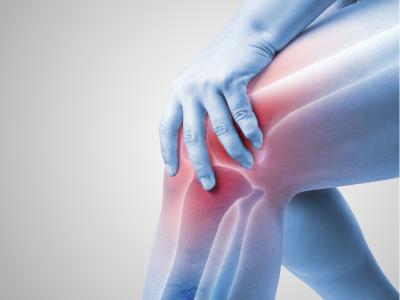
Is that last one a surprise to you? It was to me! I was listening to a podcast on kissing spine— an arthritic condition in horses that has become more prevalent. The discussion went to findings in dissections of horses with kissing spine showing bone level bruising throughout the body AND liver pathologies, and that further, when horses with kissing spine were given liver supportive treatments, the disease progression slowed dramatically or even stopped. So I had to dig deeper—was there research into the role of liver dysfunction in arthritis in people? And the answer was a resounding yes.
Now in classical biomedical standards, the liver is not considered diseased until it’s near failure— jaundice, ascites, major problems...but there is also a clear association in the literature between hepatitis B infections and arthritis. So why wouldn’t earlier-stage liver issues from other causes have the potential to cause joint and bone changes? The research certainly points that way. Given all the things our liver does for us, I’ve had a change in perspective. With the abundance of liver-supportive herbs available to us that are safe, why not just plan on a quarterly liver cleanse to help keep that lovely organ happy and healthy?
*If you take supplements, herbs, or prescription medications—do review this protocol with your health care provider or herbalist*

Do keep in mind—all the cleanses and tonics in the world won’t be able to make up for a poor diet! So on a daily basis, remember that your food and drink choices matter! Sugar, alcohol, and junk food add a strain to your liver. Herbal teas, nutrient-rich veggies, and fruits support your liver.
On a daily basis the following herbs can gently support your liver and blood:
In terms of a safe liver cleanse, MediHerb has some lovely herbal complexes to both cleanse and support the liver. So every quarter, I recommend the following protocol: Raja Wellness Quarterly Liver Cleanse
Starting the cleanse with LivCo around the full moon taps into the clearing energy of this celestial body (stay tuned next month where I discuss parasite cleanses and the pull of the full moon for more details). Then take a break for a few days and start the “tonifying” phase with Livton to support the liver as the energy of the new moon helps guide the herbs into a building phase. For most people, doing this 4 times per year will be sufficient. If you don’t regularly take prescription medications, aren’t drinking alcohol on a weekly or daily basis, get plenty of exercise, and manage your stress—then 1-2x per year will be plenty for this cleanse.
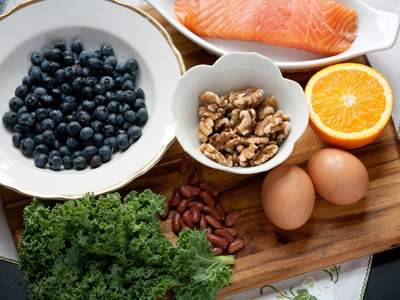
In addition to the herbs, I recommend following a liver-friendly diet rich in plant-based proteins, vegetables, and some high-quality fish in addition to nuts, olive oil, and fruits. There is a multitude of research into nutrition for longevity, reduced disease, and health. The common theme among these findings is: to eat a diet high in vegetables, plant-based proteins, and whole grains with small amounts of fruits, grains, and animal proteins. Olive oil, coconut oil, and nuts all have protective properties for the brain and liver. As Jack Lalanne used to say “The longer the shelf life, the shorter your life”. Those handy packaged “foods” are often no longer actual food but merely a food-like product!
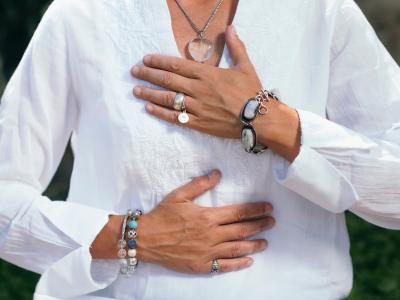
Stress and psychological factors have a direct impact on the function of the liver. The more you can regulate stress through lifestyle and exercise, the better the liver will function. In Traditional Chinese Medicine, the liver is represented by the wood element—spring is the time of liver growth with new growth reaching and bending to new heights. A healthy wood element is flexible like the young tree, bending with the wind rather than breaking. The color associated with the liver is green and stones like peridot and malachite can support liver function. And yes, regular acupuncture has been shown to reduce stress and increase overall health- even for healthy patients a quarterly “tune-up” with your acupuncturist can keep new problems from emerging. For patients with a high-stress life or who engage in intense physical training- monthly sessions help keep problems at bay.
Why are we so passionate about mental health at Raja Wellness?
The link between mental health and cardiovascular health is quite significant. Stress, especially chronic psychological stress, has a profound impact on the cardiovascular system. When the “stress response” is activated, the body secretes glucocorticoids, epinephrine, and other hormones, while inhibiting the secretion of growth hormone, insulin, and reproductive hormones. The sympathetic nervous system is also activated, leading to increased heart rate and blood pressure, among other physiological changes that divert blood to areas needed for immediate survival, such as the muscles and lungs, and away from non-essential areas like the gut and reproductive organs. This response is adaptive in the short term, but chronic activation due to chronic stress can lead to serious cardiovascular issues such as hypertension, atherosclerosis, and myocardial ischemia.
This connection between mental health and cardiovascular health highlights the intricate intertwining of psychological and physiological factors. The body's response to chronic stress can have detrimental effects on the cardiovascular system, emphasizing the importance of managing and addressing mental health to promote overall well-being, including cardiovascular health.
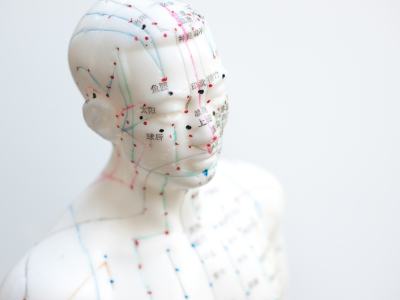
Acupuncture has many benefits for cardiovascular health:
1. Stress Reduction: Stress is a known risk factor for cardiovascular diseases. Acupuncture has been shown to modulate the body's stress response, potentially reducing the impact of stress on the heart and blood vessels.
2. Blood Pressure Regulation: Studies indicate that acupuncture may help in regulating blood pressure. By targeting specific acupuncture points, practitioners aim to optimize blood circulation and blood pressure levels, contributing to better cardiovascular function.
3. Inflammation Management: Chronic inflammation is closely linked to cardiovascular conditions. Acupuncture may exert anti-inflammatory effects, potentially reducing the systemic inflammation associated with heart disease.
4. Enhanced Circulation: The stimulation of acupuncture points is believed to enhance microcirculation, improving blood flow to vital organs including the heart. Enhanced circulation can promote heart health and overall cardiovascular function.
5. Complementary Therapy: Acupuncture is often used as a complementary therapy alongside conventional medical treatments for cardiovascular issues. It may help alleviate symptoms, improve overall well-being, and enhance the effects of standard cardiovascular care.
While acupuncture has clear benefits for cardiovascular health, we recommend individuals consult healthcare professionals before integrating acupuncture into their treatment regimen. Moreover, acupuncture alone may not be enough for people dealing with chronic stress.
Learning to manage our stress is a key part of maintaining heart health—and that’s where professional mental health care is so important as part of your overall wellness.
Herbal formulas also play an important role in heart health. Many formulas have been shown to reduce cholesterol and blood lipid levels, decrease inflammation, and increase peripheral circulation. For example, Clear Mind Formula is one of my favorite herbal formulas for heart health, especially here in Kentucky because of its natural antifungal and antimicrobial properties. This is a raw herbal concoction that we make in-house. We do recommend consulting with a trained herbalist before incorporating any herbal remedies into your care plan.
or
For more information, please don’t hesitate to call us at 270-506-3853 today!
References:
1. Wayne PM, Kaptchuk TJ. Challenges inherent to t'ai chi research: part II-defining the intervention and optimal study design. Journal of Alternative and Complementary Medicine. 2008;14(2):191-197.
2. Fu, C., Zhao, N., & Liu, Z. (2013). Chronic pain: acupuncture and related therapies. Springer Science & Business Media
3. Chen J, Ye C, Yang Z, Zhang C, Li P, Xu B, Wu A, Zhang X, Xue X. Erchen decoction to reduce oxidative stress in dyslipidemia phlegm-dampness retention syndrome mice: In vivo mechanism revealed by metabolomics (liquid chromatography-mass spectrometry). Phytomedicine. 2023 Jul;115:154808. doi: 10.1016/j.phymed.2023.154808.
As we usher in the Chinese New Year 2024, anticipation and excitement fill the air as the majestic Year of the Dragon takes center stage in the Chinese zodiac. Known for its mythical charm and symbolizing strength, good fortune, and prosperity, the dragon is a revered and auspicious creature in Chinese culture. This Lunar New Year celebration promises a journey into a realm of ancient traditions, vibrant festivities, and the promise of positive energies as we embrace the spirit of the dragon.
The Dragon also represents courage, creativity, and innovation. In a dragon year, people are said to be able to harness the creature’s intelligence, leadership, and abilities to pursue their dreams with creativity, passion, courage, and confidence. 2024 promises to be a year full of possibilities and opportunities and as a Yang Wood Dragon year the hallmarks will represent growth and flexibility. Dragon years are auspicious times to embrace new endeavors and develop new aspects of yourself thanks to the fiery and creative nature of dragons but with the yang wood element, there is a special emphasis on growing to new heights.
The transition into the Year of the Dragon invites us to reflect on our personal journey, embrace change, and pursue our goals with renewed vigor. It is a time to set intentions, cultivate positive energy, and embody the resilience and strength symbolized by the dragon. Whether through traditional rituals or modern celebrations, the Chinese New Year serves as a poignant reminder of the cyclical nature of life and the continuous pursuit of harmony and balance!
There won’t be another Wood Dragon year for 60 years, so embrace this year to step out of your comfort zone and grow!

Green will be an auspicious color this year, thanks to the wood element, specifically a rich emerald green. Some say wearing this color, or including it in your office will enhance prosperity and wealth in the coming year. However, dragons also appreciate the dynamic colors of red, orange, and purple so those colors will be important as well in a dragon year.
Certain stones may also be influenced by the energy of the Wood Dragon with emerald, malachite, carnelian, ruby, and amethyst having positive influences for the year.
As the dragon unfurls its majestic wings over the Chinese New Year of 2024, let us collectively embrace the spirit of strength, prosperity, and good fortune it symbolizes. May this vibrant and auspicious year bring joy, success, and a sense of renewal to all, fostering a harmonious beginning filled with promise and positive energies!
After enjoying a delicious meal, we may be tempted to kick back and relax. However, emerging research suggests incorporating a brisk walk into your post-meal routine can offer numerous health benefits. From improved digestion to better blood sugar control, the advantages of walking after eating are backed by scientific evidence!
Enhanced Digestion:
One of the primary benefits of walking after eating is improved digestion. Physical activity helps stimulate the digestive system, encouraging the efficient breakdown of food. A study published in the "Journal of Gastrointestinal and Liver Diseases" found that post-meal walks accelerated the rate at which food moved through the stomach and intestines, reducing feelings of bloating and discomfort.1
Blood Sugar Regulation:
Walking after a meal may contribute to better blood sugar control, especially for individuals with or at risk of type 2 diabetes. A study in the "Diabetes Care" journal demonstrated that a short, 15-minute walk after each meal significantly lowered post-meal blood sugar levels in individuals with type 2 diabetes.2
Weight Management:
Incorporating walking into your post-meal routine may contribute to weight management. A study published in the "Journal of Physical Activity and Health" found that individuals who engaged in post-meal walks experienced reduced blood triglyceride levels, which are associated with improved metabolism and weight control.3
Mental Well-being:
Physical activity, including walking, has been linked to improved mood and reduced stress levels. Taking a short stroll after a meal can help combat feelings of lethargy and promote a sense of well-being. A review in the "British Journal of Sports Medicine" highlights the positive impact of physical activity on mental health.4

Sometimes, walking may not be an option, and that’s ok! The subtle strength of any low-impact exercise offers wonderful benefits and is accessible to individuals of all ages and fitness levels. Low-impact exercises such as using a rebounder or simply bouncing in place for 2 minutes can offer similar physical and mental health benefits!
The evidence supporting the benefits of walking after eating is compelling. From aiding digestion and regulating blood sugar to contributing to weight management and mental well-being, taking a post-meal stroll or even bouncing in place is a simple yet effective way to enhance overall health!
Incorporating this habit into your daily routine may lead to long-term positive outcomes, making it a small step with significant health rewards.
Sources